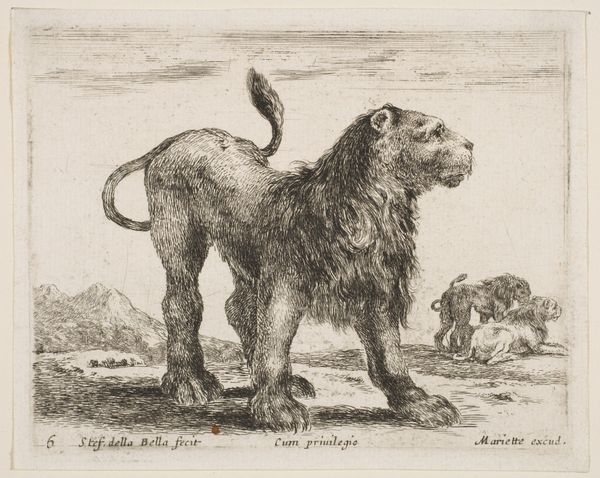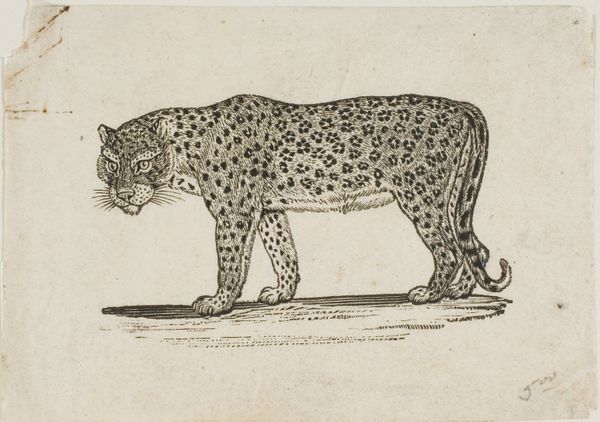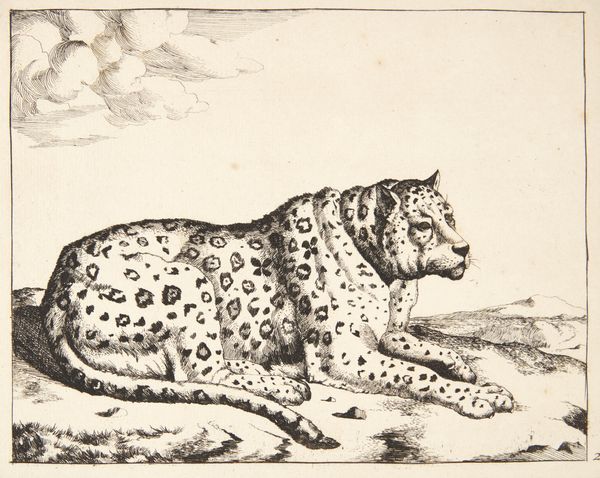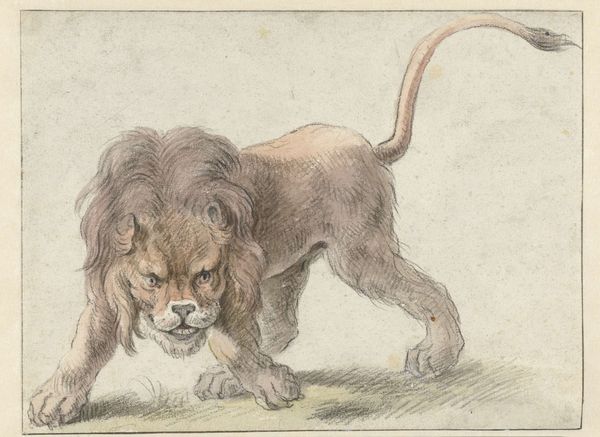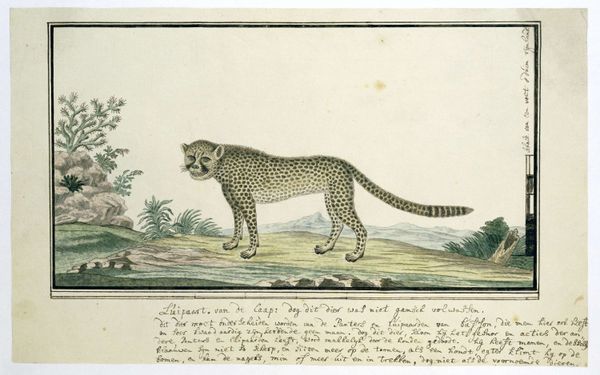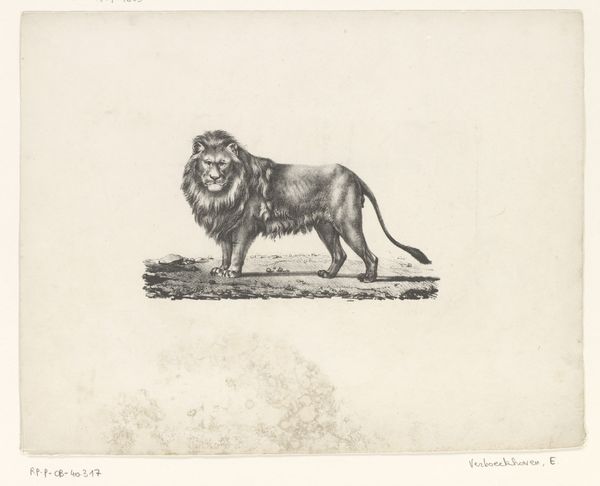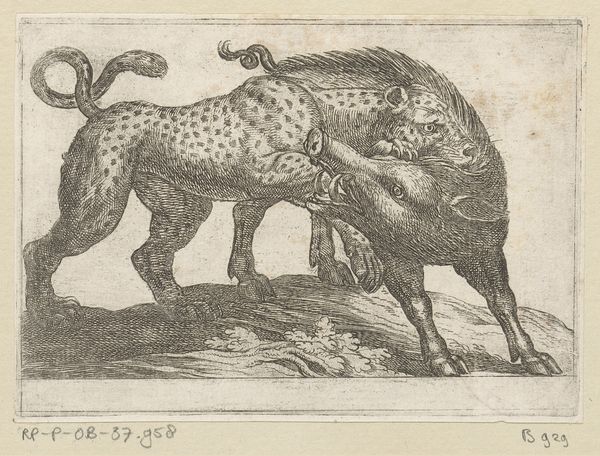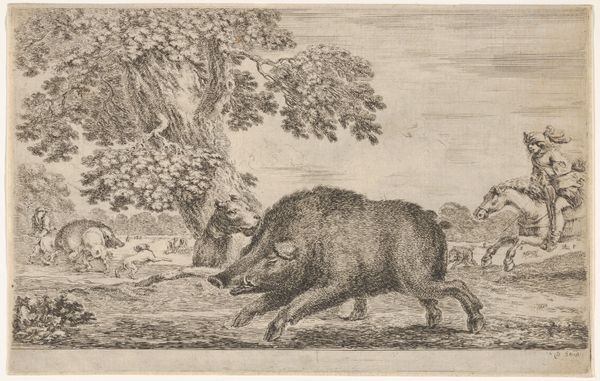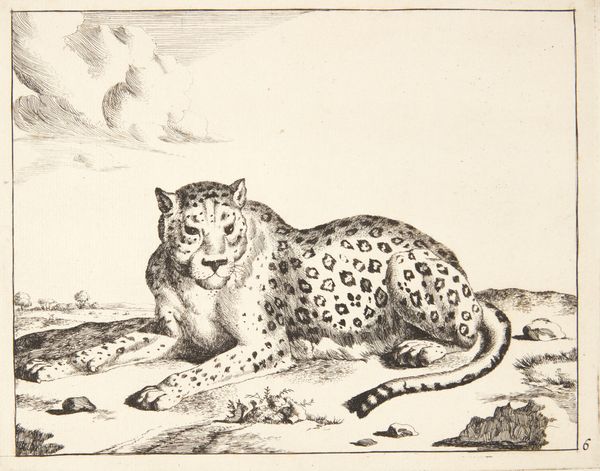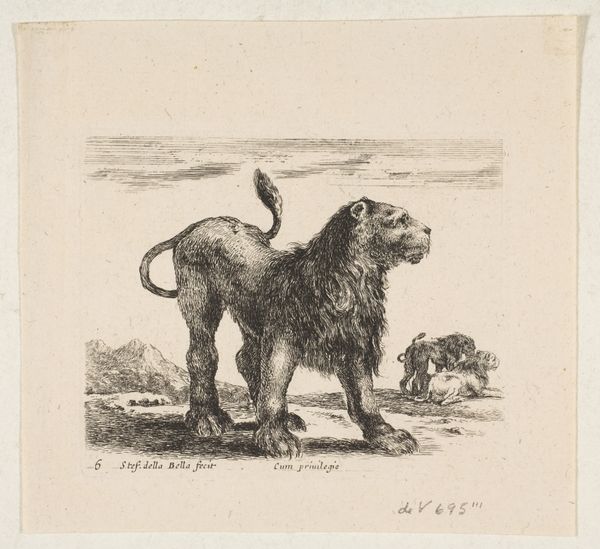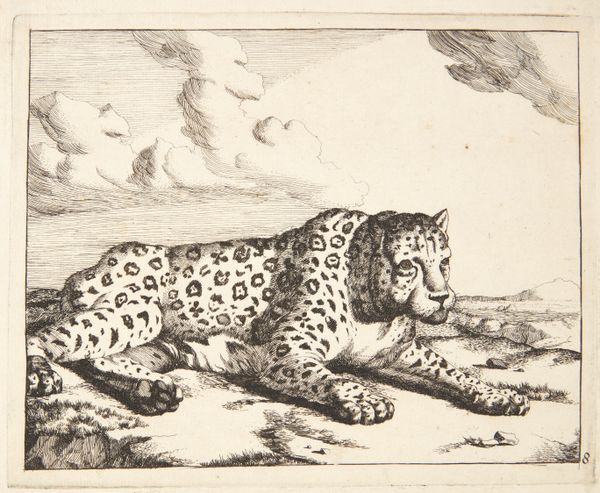
Plate 9: Leopard, from "Various animals" (Diversi animali) 1636 - 1646
0:00
0:00
drawing, print, etching
#
drawing
#
baroque
#
animal
# print
#
etching
#
landscape
#
figuration
Dimensions: Sheet (trimmed to plate): 3 3/8 × 4 5/16 in. (8.6 × 10.9 cm)
Copyright: Public Domain
Curator: Today we’re looking at "Plate 9: Leopard, from 'Various animals'", an etching by Stefano della Bella, created sometime between 1636 and 1646. Editor: My first impression is a sort of gentle curiosity. The lightness of the etching combined with the animal's placid stride creates an oddly charming effect. The line work really emphasizes the creature’s elegant musculature. Curator: It's interesting you say that. In its time, prints such as this one disseminated knowledge about the natural world to a wider audience. But they also reflected—and helped reinforce—colonial power structures through the depiction of exotic fauna within the European imaginary. Editor: So, the leopard as a symbol? Are you suggesting this image participates in constructing a particular idea of “otherness” linked to colonial narratives? Curator: Precisely. Consider how the animal is presented—isolated in a somewhat barren landscape. The artist’s focus seems to be less on ecological accuracy and more on staging the animal as a display of possession. Editor: I see your point. Though one could also appreciate the artist’s attention to detail – look at the fur, the shading. There's a definite appeal in the rendering itself, even if the subtext is unsettling. The tail, with its pronounced curl, introduces a playful element, disrupting the severity. Curator: But perhaps that "playful" element also served to defuse any sense of threat or power the animal might have possessed in its native context. By rendering it almost cartoonish, the print perhaps aims to further domesticate it for European consumption, literally and figuratively. It's also a reflection on class, isn't it? Who can afford to own something so rare and beautifully executed? Editor: Indeed. But even acknowledging the politics embedded in its historical context, can we not still appreciate the formal qualities? The delicate lines, the balanced composition, the implied texture of the leopard’s coat... Curator: Of course, formal qualities are always present. Yet to divorce them from the power dynamics at play, in my view, would be a critical oversight. Recognizing how aesthetics intersect with ideology allows for a more complete, and perhaps uncomfortable, understanding of the artwork's legacy. Editor: A worthwhile discomfort, certainly. This close examination shows how an ostensibly simple image can be deeply implicated in broader cultural and political narratives. Curator: Exactly. And by interrogating those narratives, we gain a richer understanding of both the artwork and ourselves.
Comments
No comments
Be the first to comment and join the conversation on the ultimate creative platform.
